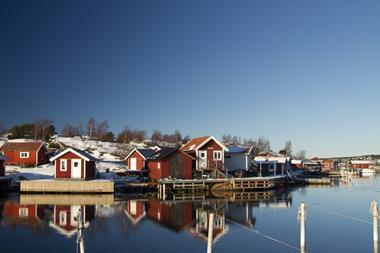Sweden’s AP buffer funds should reconsider their heavy home investment bias in light of the theoretically higher risk the approach poses, the government has said.
In its 2013 annual report on the six funds — AP1 to AP4, AP6 and AP7 — the government said that, like other pension funds, the buffer funds tended to be overweight domestic assets compared with foreign investments.
The report said: “Funds should clearly disclose the reasons for this ratio and comment on this in terms of expected returns and risk, and how this benefits the Swedish pension system.”
The first to fourth AP funds had about 14% of assets allocated to Swedish equities, it said, adding that this was significantly more than a global index would indicate.
“A Swedish investor would therefore theoretically be able to achieve better diversification (lower risk) with sustained yield by reducing the bias towards the domestic market,” it said.
However, the government’s report said the counter-argument was that the Swedish stock market had produced a higher nominal return over longer periods than other major exchanges.
Between 2001 to 2013, the Swedish stock exchange produced average annual returns of 8% compared with the MSCI World in euros, which returned an annual average of 1.6% over the period.
The report also recommended reviewing and defining the funds’ investment rules on bonds, as well as strategies for unquoted assets.
Several of the funds had come close to the 30% floor on investment in bonds in 2013, it said.
Over the last few years, it noted, the funds increased their allocation to alternative assets to around 15% from 5%.
Of around SEK150bn (€13.5bn) the funds had invested in alternatives, SEK30bn was invested in non-listed assets, the report said.
It said this development indicated there was reason to look at the possibility of the buffer funds working together in the area of non-listed investments to build skills and create cost synergies.
The AP funds performed well in comparison with similar funds in other countries.
In comparison with seven other such institutional investors including ABP in the Netherlands and CalPERS in the US, over the period 2004 to 2013, only Denmark’s ATP produced a nominal return higher than that generated by the AP buffer fund system.
ATP returned 8.7% over the period, while the AP funds returned 7.1%.
The report said ATP had benefited from a high proportion of fixed income assets combined with falls in interest rates until 2013.
Last year, the AP funds as a whole produced a stated return of 13.5%, up from 11.6% the year before.
Over the period 2001 to 2013, the return was 4.7%, above the 3.3% increase in the Swedish income index over the same timespan.
The income index shows average income and is the basis for adjustments of debt in the country’s income pension system.
Total fund assets in the AP fund system rose to SEK1.06trn at the end of 2013, up from SEK958bn at the end of 2012.
The report acknowledged that the AP funds pension system was set to change in the summer of 2016 according to measures agreed by the Pension Group.
Under the agreement, five of the pension funds — excluding AP7 — are to be restructured into three funds, and a single principal is to be appointed to set targets for the funds’ asset management and design a reference portfolio.


















1 Reader's comment